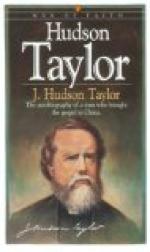The tide in the Hudson River is the continuation of the tide-wave, which comes up from the ocean through New York Bay, and is carried by its own momentum one hundred and sixty miles, growing, of course, constantly smaller, until it is finally stopped by the dam at Troy. The crest of this wave, or top high water, is ten hours going from New York to Troy. A steamer employing the same time (ten hours) for the journey, and starting at high water in New York, would carry a flood tide and highest water all the way, and have an up-river current of about three miles an hour helping her. On the other hand, the same steamer starting six hours later, or at low tide, would have dead low water and an ebb tide current of about three miles against her the entire way. The average rise and fall of the tides in New York is five and one-half feet, and in Troy, about two feet.
Flood tide may carry salt water, under the most favorable circumstances, so that it can be detected at Poughkeepsie; ordinarily the water is fresh at Newburgh.
To those who have not studied the tides the following will also be of interest.
The tides are the semi-diurnal oscillations of the ocean, caused by the attraction of the moon and sun.
The influence of the moon’s attraction is the preponderating one in the tide rising force, while that of the sun is about two-fifths as much as that of the moon. The tides therefore follow the motion of the moon, and the average interval between the times of high water is the half length of the lunar day, or about twelve hours and twenty-five minutes.
* * *
Nor lives there one whose boyhood’s
days
Of happiness were passed beneath that
sun,
That in his manhood-prime can calmly gaze
Upon that Bay, or on that mountain stand,
Nor feel the prouder of his native land.
Fitz-Greene Halleck.
* * *
CONDENSED POINTS.
As Seen on the Hudson River Day Line Steamers.
Desbrosses Street Pier. On leaving landing a charming view is obtained of New York Harbor with Bartholdi Statue to the south.
Stevens Castle. Above Jersey City docks on the west, crowning a commanding site.
St. Michael’s Monastery, or Monastery of the Passionist Fathers, on west bank above Elysian Fields; distinguished by large dome and towers of the St. Paul (London) style of architecture. This dome is 300 feet high, and its summit is 515 feet above the Hudson.
42d Street Pier. Midway to the dwellers of Greater New York and convenient to all Elevated, Subway and Trolley Lines.
Weehawken, on the west bank, about opposite 50th Street. Near the river bank was the scene of the Hamilton and Burr duel, 1804.
Soldiers’ and Sailors’ Monument, 89th Street, New York. Dedicated May 30, 1902. Corner stone laid in 1900 by President Roosevelt when Governor.




